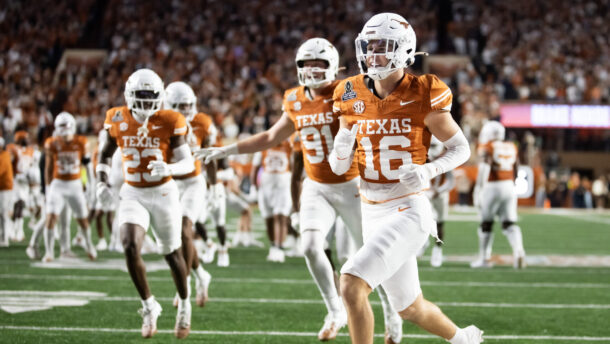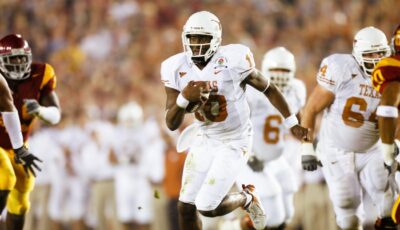
LSU football: Passing game great, but is it too much to ask for Tigers to run better?
By Les East
Published:
We’re three weeks into the season and where is the LSU run game?
Sure the Tigers are 3-0.
They’re ranked No. 4 in the country.
Their suddenly explosive, efficient, and nearly flawless passing game has been as big a story as there has been in college football so far.
So questioning the run game might fall into the category of picking nits. But for a team with five really talented running backs and the aforementioned passing game to occupy defenses’ focus, LSU really should be more productive in the run game.
First of all it’s LSU. Running the ball effectively has been one of its signature features for a long, long time.
Secondly, the long-sought goal has been to create a consistently productive passing game to complement the run game, not replace it as the overwhelming aspect of the offense.
We don’t want to look a gift horse in the mouth because this passing game is the gift LSU fans have been awaiting for about a decade or so.
But the numbers in mid-September are not indicative of what the Tigers need them to be in late December or perhaps January.
In the season opener against Georgia Southern, LSU ran the ball 33 times for 122 yards, an average of 3.7 yards per rush.
In the second game at Texas, LSU ran the ball 29 times for 102 yards, an average of 3.5 yards.
In the 65-14 victory against Northwestern State on Saturday night in Tiger Stadium, they ran the ball 35 times for 122 yards, an average of 3.5 yards.
That’s three games, two of which were against outmanned opponents (Georgia Southern and Northwestern State) in games where the Tigers built really big leads and presumably were in position to pound away with fresh running backs against a dispirited opponent.
But in neither of the blowouts were they able to average as much as 4 yards per rush. They weren’t able to do so against Texas either. In all three games the passing game was so productive and so efficient that the defenses should have been susceptible to a more productive LSU run game.
The Tigers have come pretty close to achieving head coach Ed Orgeron’s oft-stated goal of having essentially a 50-50 split between run plays and pass plays. Through three games, LSU has thrown 111 passes and run the ball 97 times, a reasonable deviation from the 50-50 split given the disparity in the productivity of the run game and the pass game.
LSU has a stable of talented running backs in Clyde Edwards-Helaire, Lanard Fournette, Chris Curry and freshmen John Emery II and Tyrion Davis-Price.
None of them figure to be in New York for the Heisman Trophy presentation, but the ability to run so many roughly equal backs at defenses has served the Tigers well in the past.
In 2011, the Tigers were ranked No. 1 for most of the season and played for a national championship with Michael Ford, Spencer Ware, Alfred Blue, Kenny Hilliard and Terrence Magee sharing the workload in the run game.
Similar platoon systems have been used to good effect in the seasons since.
But now with the dangerous passing game that those previous Tigers never had, this team – at least through three games – has not run the ball consistently well.
The offensive line was a question mark entering the season. Was it talented enough across the board, and deep enough, to play at as high a level as the rest of the team?
Perhaps it is. And perhaps the first three games merely demonstrate that it’s unrealistic to expect such dramatic improvement in the passing game while maintaining a similar level of rushing productivity just three games into a new approach.
But it’s really weird for LSU to be No. 4 in the country and looking like a contender for a College Football Playoff berth while the run game is so pedestrian.
Les East is a New Orleans-based football writer who covers LSU for SaturdayDownSouth.com. Follow him on Twitter @Les_East.







